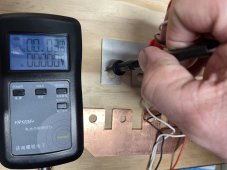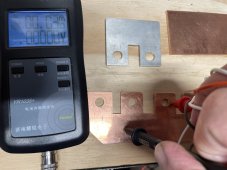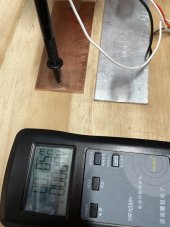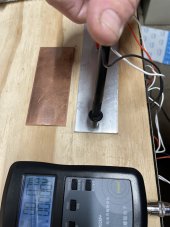Yes it’s solid copper. Drilled like it was condition “full hard” pure copper. I’ve been machining everything from aluminum to zirconium for over forty years so yeah, I can tell. It was actually flat within.003” across the width which is a lot better by comparison than the little buss bars that come with cells that are convex or concave and distorted from the oval punched holes, not optimal for small welded terminals. I was going to fly cut them but there’s no need.
This is what I was working on today. They are collet sections to hold thin wall stainless 14” tubing to prep ends for welding. Tank farm for spaceX project. By your demeanor, you assume others must be a knuckle dragger. Good evening sir.
Hey man, I wasn't intending any attitude, so sorry it seemed that way.
Generally speaking fakes on Amazon are mainly in 2 categories: The "obvious to anyone with some knowhow in that product category" (things like "2TB" microSD cards for 90 bucks that will fool the unaware and even LOOK like they work", and the fakes/clones of legit products MIXED IN with legit products that look the same or close to it. These are infuriating because you can buy "from samsung" on Amazon but due to how they do inventory all of the "same" product gets the same internal code, so "Bob-not-a-scammer" sends a bunch of "Samsung 512Gb SD cards" to sell on amazon and they get mixed in with the legit ones and what you the customer get is a lucky dip.
I'm going to go over my thinking, not because I am saying you don't know it, but half to share with anyone who doesn't and half to see if I misunderstand

Now, my understanding is that the *purity* of the metal greatly impacts heat and electrical transfer (they seem to be related closely due to some science stuff I forget

), and that purity is part of what makes for the cost. Getting 90 or even 99% pure copper isn't impressive and won't have as good conductivity as 99.99%. From what I can find online depending on the exact impurity it doesn't take much to double the resistance (99.6% pure with iron, silicon or platinum mixed in for example)
I'm not doubting your skill or expertise, but I'm not sure you'd be able to tell 99.9% from 99.5% purity by anything like workability, looks, etc. You'd have to test with a sensitive micro-ohm meter (and compare to a reference, make sure it's calibrated and all that joy).
Given the current prices on copper, it would be VERY lucrative to pass off mid-grade recycled copper thats 99-99.5% pure as 99.99% pure. And in a lot of cases thats going to be FINE, sane people over-spec, the ampacity limits usually have a margin of error and so on.
----
That's an awesome history of machining stuff! I'm perhaps more surprised at the flatness, a lot of the commercial busbars (even the Lynx) are less flat than that. I think the oval holes are useful for cells with terminals, but agree they can suck on the smaller welded ones. I've had to send a commercial busbar back (not naming names so we don't start anymore flamewars) becuase it was so warped I could see light under the terminal when fully torqued and 2 of the other holes were not 90deg to the bar.
Awesome work on those pieces, very nice! I'm very envious of whatever setup you're rocking, any totally DIY busbars I made would be clown level in comparison!








